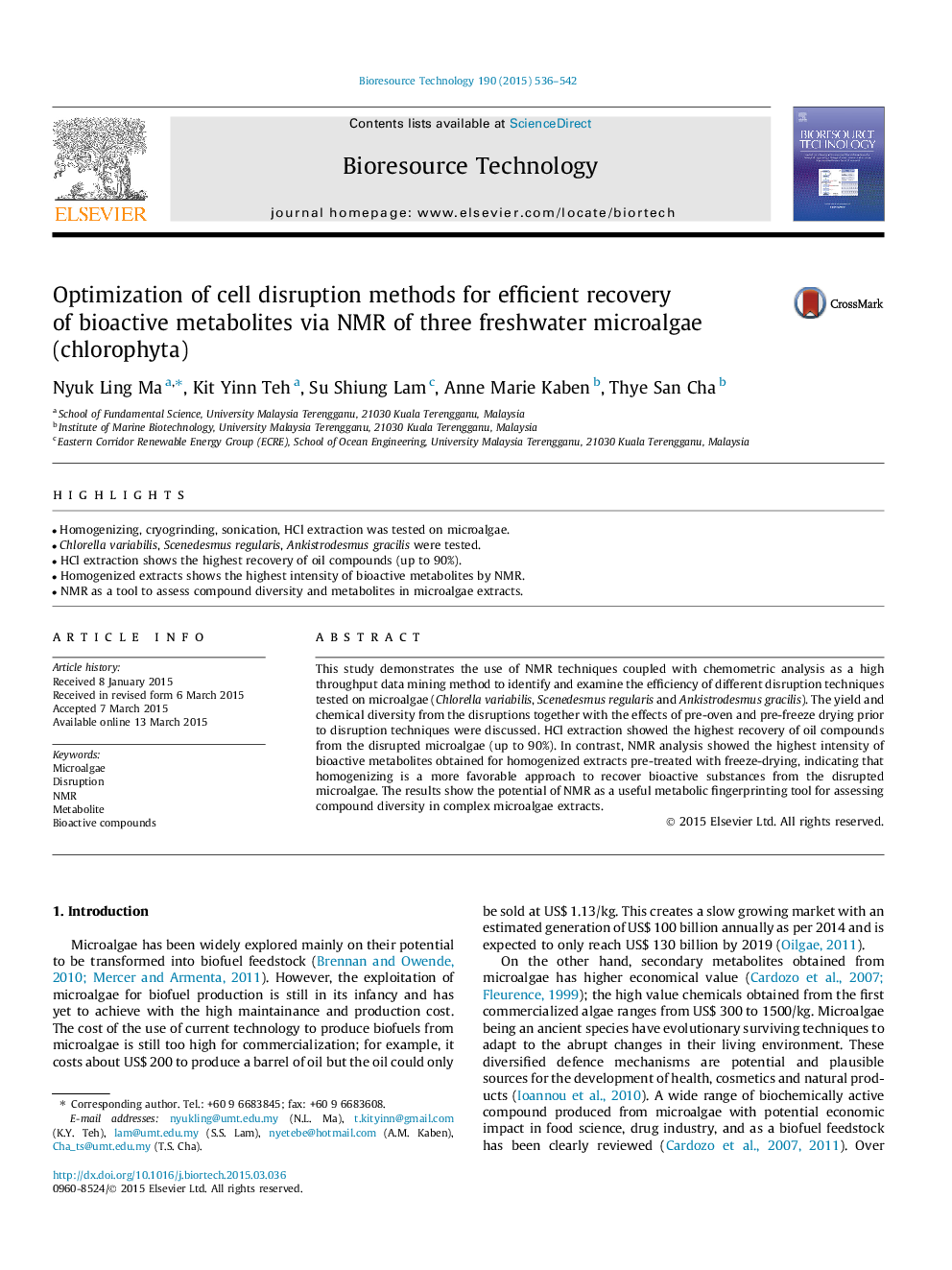| Article ID | Journal | Published Year | Pages | File Type |
|---|---|---|---|---|
| 679631 | Bioresource Technology | 2015 | 7 Pages |
•Homogenizing, cryogrinding, sonication, HCl extraction was tested on microalgae.•Chlorella variabilis, Scenedesmus regularis, Ankistrodesmus gracilis were tested.•HCl extraction shows the highest recovery of oil compounds (up to 90%).•Homogenized extracts shows the highest intensity of bioactive metabolites by NMR.•NMR as a tool to assess compound diversity and metabolites in microalgae extracts.
This study demonstrates the use of NMR techniques coupled with chemometric analysis as a high throughput data mining method to identify and examine the efficiency of different disruption techniques tested on microalgae (Chlorella variabilis, Scenedesmus regularis and Ankistrodesmus gracilis). The yield and chemical diversity from the disruptions together with the effects of pre-oven and pre-freeze drying prior to disruption techniques were discussed. HCl extraction showed the highest recovery of oil compounds from the disrupted microalgae (up to 90%). In contrast, NMR analysis showed the highest intensity of bioactive metabolites obtained for homogenized extracts pre-treated with freeze-drying, indicating that homogenizing is a more favorable approach to recover bioactive substances from the disrupted microalgae. The results show the potential of NMR as a useful metabolic fingerprinting tool for assessing compound diversity in complex microalgae extracts.
